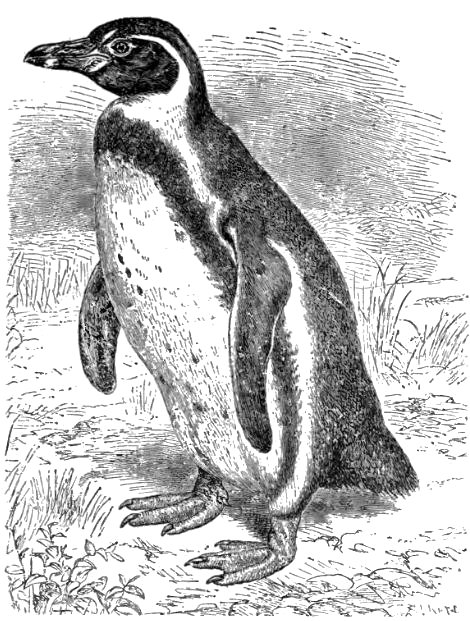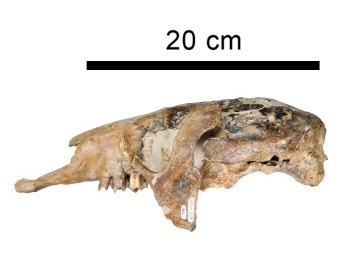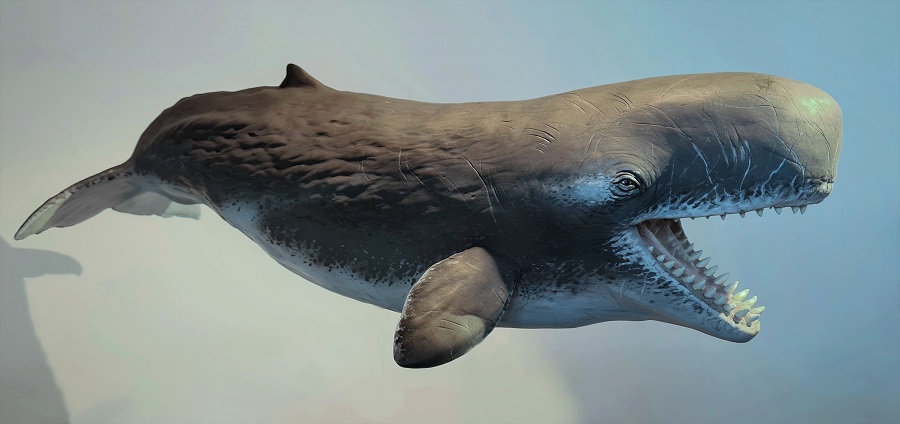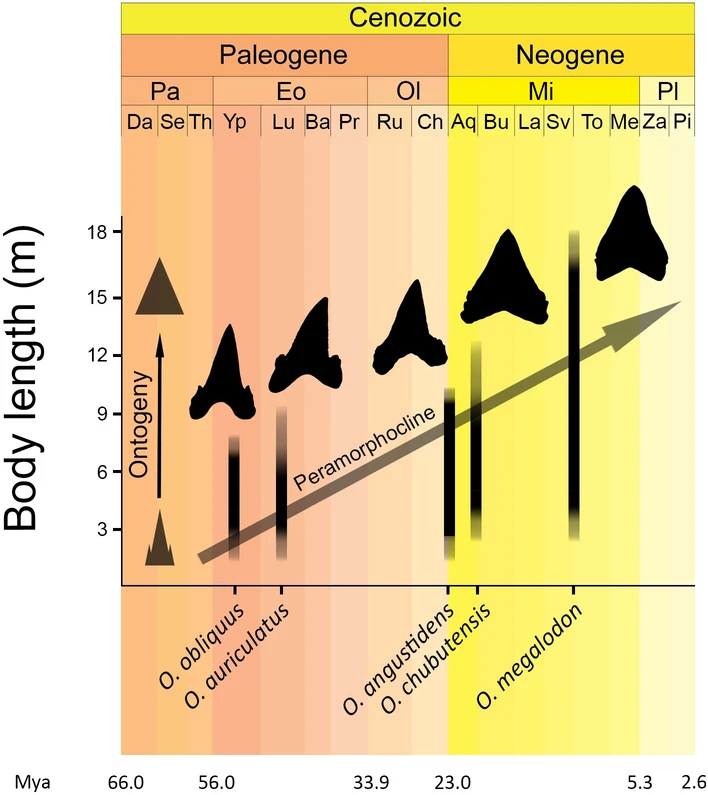|
Pisco Formation
The Pisco Formation is a geologic formation located in Peru, on the southern coastal desert of Ica, Peru, Ica and Arequipa. The approximately thick formation was deposited in the Pisco Basin, spanning an age from the Miocene, Late Miocene up to the Early Pliocene, roughly from 9.6 to 4.5 Ma. The tuffaceous sandstones, diatomaceous siltstones, Conglomerate (geology), conglomerates and dolomite (rock), dolomites were deposited in a lagoonal to near-shore depositional environment, environment, in bays similar to other Pacific South American formations as the Caldera Basin, Bahía Inglesa and Coquimbo Formations of Chile. The Pisco Formation is considered one of the most important Lagerstätten,Brand et al., 2004Brand et al., 2011 based on the large amount of exceptionally preserved marine fossils, including sharks (most notably megalodon), penguins, whales, dolphins, birds, marine crocodiles and aquatic giant sloths. Famous fossils found in these layers include the giant raptorial s ... [...More Info...] [...Related Items...] OR: [Wikipedia] [Google] [Baidu] |
Geological Formation
A geological formation, or simply formation, is a body of rock having a consistent set of physical characteristics (lithology) that distinguishes it from adjacent bodies of rock, and which occupies a particular position in the layers of rock exposed in a geographical region (the stratigraphic column). It is the fundamental unit of lithostratigraphy, the study of strata or rock layers. A formation must be large enough that it can be mapped at the surface or traced in the subsurface. Formations are otherwise not defined by the thickness (geology), thickness of their rock strata, which can vary widely. They are usually, but not universally, tabular in form. They may consist of a single lithology (rock type), or of alternating beds of two or more lithologies, or even a heterogeneous mixture of lithologies, so long as this distinguishes them from adjacent bodies of rock. The concept of a geologic formation goes back to the beginnings of modern scientific geology. The term was used by ... [...More Info...] [...Related Items...] OR: [Wikipedia] [Google] [Baidu] |
Thalassocnus
''Thalassocnus'' is an extinct genus of semiaquatic ground sloths from the Miocene and Pliocene of the Pacific South American coast. It is monotypic within the subfamily Thalassocninae. The five species—''T. antiquus'', ''T. natans'', ''T. littoralis'', ''T. carolomartini'', and ''T. yuacensis''—represent a chronospecies, a population gradually adapting to marine life in one direct lineage. They are the only known aquatic sloths, but they may have also been adapted to a terrestrial lifestyle. They have been found in the Pisco Formation of Peru, the Tafna Formation of Argentina, and the Bahía Inglesa Formation, Bahía Inglesa, Coquimbo Formation, Coquimbo, and Horcón Formation, Horcón formation (geology), formations of Chile. Thalassocninae has been placed in both the family (biology), families Megatheriidae and Nothrotheriidae. ''Thalassocnus'' evolved several marine adaptations over 4 million years, such as dense and heavy bones to counteract buoyancy, the internal nostri ... [...More Info...] [...Related Items...] OR: [Wikipedia] [Google] [Baidu] |
Livyatan
''Livyatan'' is an extinct genus of macroraptorial Physeteroidea, sperm whale containing one known species: ''L. melvillei''. The genus name was inspired by the Bible, biblical sea monster Leviathan, and the species name by Herman Melville, the author of the famous novel ''Moby-Dick'' about a white bull sperm whale. Herman Melville often referred to whales as "Leviathans" in his book. It is mainly known from the Pisco Formation of Peru during the Tortonian stage of the Miocene Epoch (geology), epoch, about 9.9–8.9 million years ago (mya); however, finds of isolated teeth from other locations such as Chile, Argentina, the United States (California), South Africa and Australia imply that either it or a close relative survived into the Pliocene, around 5mya, and may have had a global presence. It was a member of a group of macroraptorial sperm whales (or "raptorial sperm whales") and was probably an apex predator, preying on whales, seals and so forth. Characteristically of rapto ... [...More Info...] [...Related Items...] OR: [Wikipedia] [Google] [Baidu] |
Giant Sloth
Ground sloths are a diverse group of extinct sloths in the mammalian superorder Xenarthra. They varied widely in size with the largest, belonging to genera '' Lestodon'', ''Eremotherium'' and ''Megatherium'', being around the size of elephants. Ground sloths represent a paraphyletic group, as living tree sloths are thought to have evolved from ground sloth ancestors. The early evolution of ground sloths took place during the late Paleogene and Neogene of South America, while the continent was isolated. At their earliest appearance in the fossil record, they were already distinct at the family level. Sloths dispersed into the Greater Antilles during the Oligocene, and the presence of intervening islands between the American continents in the Miocene allowed a dispersal of some species into North America. They were hardy as evidenced by their high species diversity and their presence in a wide variety of environments, extending from the far south of Patagonia ( Cueva del Milodón ... [...More Info...] [...Related Items...] OR: [Wikipedia] [Google] [Baidu] |
Megalodon
''Otodus megalodon'' ( ; meaning "big tooth"), Common name, commonly known as megalodon, is an extinction, extinct species of giant mackerel shark that lived approximately 23 to 3.6 million years ago (Mya), from the Early Miocene to the Early Pliocene epochs. ''O. megalodon'' was formerly thought to be a member of the family (biology), family Lamnidae and a close relative of the great white shark (''Carcharodon carcharias''), but has been reclassified into the extinct family Otodontidae, which Speciation, diverged from the great white shark during the Early Cretaceous. While regarded as one of the largest and most powerful predators to have ever lived, megalodon is only known from fragmentary remains, and its appearance and maximum size are uncertain. Scientists have argued whether its body form was more stocky or elongated than the modern lamniform sharks. Maximum body length estimates between based on various analyses have been proposed, though the Mode (statistics), modal ... [...More Info...] [...Related Items...] OR: [Wikipedia] [Google] [Baidu] |
Lagerstätte
A Fossil-Lagerstätte (, from ''Lager'' 'storage, lair' '' Stätte'' 'place'; plural ''Lagerstätten'') is a sedimentary deposit that preserves an exceptionally high amount of palaeontological information. ''Konzentrat-Lagerstätten'' preserve a high concentration of fossils, while ''Konservat-Lagerstätten'' offer exceptional fossil preservation, sometimes including preserved soft tissues. ''Konservat-Lagerstätten'' may have resulted from carcass burial in an anoxic environment with minimal bacteria, thus delaying the decomposition of both gross and fine biological features until long after a durable impression was created in the surrounding matrix. ''Fossil-Lagerstätten'' spans geological time from the Neoproterozoic era to the present. Worldwide, some of the best examples of near-perfect fossilization are the Cambrian Maotianshan shales and Burgess Shale, the Ordovician Soom Shale, the Silurian Waukesha Biota, the Devonian Hunsrück Slates and Gogo Formation, the Ca ... [...More Info...] [...Related Items...] OR: [Wikipedia] [Google] [Baidu] |
Coquimbo Formation
The Coquimbo Formation (previously known as Piso de Coquimbo or ''Coquimbo Stufe'') is a littoral, sedimentary, and fossiliferous geological formation that chiefly crops out along the coast of the Coquimbo Region, Chile. It is dated back to the Miocene to Pleistocene, Middle Pleistocene. The lithology of the formation comprises sands, sandstones, siltstones, limestones, coquinas, and Conglomerate (geology), conglomerates. The strata and facies of the Coquimbo Formation reflect a complex marine depositional history, varying from deep to shallow water paleoenvironments controlled by tectonic events and turbulent, successive changes in sea the level that developed large marine terraces within the strata which is recorded in the form of marine Marine transgression, transgressions and Marine regression, regressions. The Coquimbo Formation preserves a rich fossil marine assemblage, including molluscs, barnacles, brachiopods, fish, seabirds, and marine mammals such as cetaceans and Thal ... [...More Info...] [...Related Items...] OR: [Wikipedia] [Google] [Baidu] |
Caldera Basin
Caldera Basin () is a sedimentary basin located in the coast of northern Chile west of Copiapó. The basin has a fill of marine sediments of Late Cenozoic age. With a north–south extension of and an east–west width of the basin occupies an area between the coast and the Chilean Coast Range and between the port of Caldera and the mouth of Copiapó River. The sedimentary fill rests on metamorphic rocks of Paleozoic age and on plutonic rocks of Mesozoic The Mesozoic Era is the Era (geology), era of Earth's Geologic time scale, geological history, lasting from about , comprising the Triassic, Jurassic and Cretaceous Period (geology), Periods. It is characterized by the dominance of archosaurian r ... age. Stratigraphy References Further reading * * * * * * * * * * * {{Geology of Chile Forearc basins Geology of Atacama Region Sedimentary basins of Chile ... [...More Info...] [...Related Items...] OR: [Wikipedia] [Google] [Baidu] |
Depositional Environment
In geology, depositional environment or sedimentary environment describes the combination of physical, chemical, and biological processes associated with the deposition of a particular type of sediment and, therefore, the rock types that will be formed after lithification, if the sediment is preserved in the rock record. In most cases, the environments associated with particular rock types or associations of rock types can be matched to existing analogues. However, the further back in geological time sediments were deposited, the more likely that direct modern analogues are not available (e.g. banded iron formations). Types of depositional environments Continental * – type of Fluvial deposit. Caused by moving water in a fan shape (Alluvial Fan) and containing mostly impermeable and nonporous sediments well sorted. * . Often in deserts and coastal regions and well sorted, large scale cross-beds * – processes due to moving water, mainly streams. Common sediments are g ... [...More Info...] [...Related Items...] OR: [Wikipedia] [Google] [Baidu] |
Tuff
Tuff is a type of rock made of volcanic ash ejected from a vent during a volcanic eruption. Following ejection and deposition, the ash is lithified into a solid rock. Rock that contains greater than 75% ash is considered tuff, while rock containing 25% to 75% ash is described as ''tuffaceous'' (for example, ''tuffaceous sandstone''). A pyroclastic rock containing 25–75% volcanic bombs or volcanic blocks is called tuff breccia. Tuff composed of sandy volcanic material can be referred to as volcanic sandstone. Tuff is a relatively soft rock, so it has been used for construction since ancient times. Because it is common in Italy, the Romans used it often for construction. The Rapa Nui people used it to make most of the ''moai'' statues on Easter Island. Tuff can be classified as either igneous or sedimentary rock. It is usually studied in the context of igneous petrology, although it is sometimes described using sedimentological terms. Tuff is often erroneously called t ... [...More Info...] [...Related Items...] OR: [Wikipedia] [Google] [Baidu] |
Early Pliocene
Early may refer to: Places in the United States * Early, Iowa, a city * Early, Texas, a city * Early Branch, a stream in Missouri * Early County, Georgia * Fort Early, Georgia, an early 19th century fort Music * Early B, stage name of Jamaican dancehall and reggae deejay Earlando Arrington Neil (1957–1994) * Early James, stage name of American singer-songwriter Fredrick Mullis Jr. (born 1993) * ''Early'' (Scritti Politti album), 2005 * ''Early'' (A Certain Ratio album), 2002 * Early Records, a record label Other uses * Early (name), a list of people and fictional characters with the given name or surname * Early effect The Early effect, named after its discoverer James M. Early, is the variation in the effective width of the base in a bipolar junction transistor (BJT) due to a variation in the applied base-to-collector voltage. A greater reverse bias acro ..., an effect in transistor physics * Early, a synonym for ''hotter'' in stellar classification See also * * ... [...More Info...] [...Related Items...] OR: [Wikipedia] [Google] [Baidu] |







